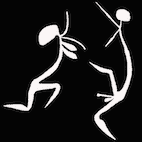Tiwi Art
Tiwi art is inseparable from Tiwi culture—each painting, sculpture, or carved object emerges from a world shaped by ancestral stories, kinship systems, and ceremonial life. To truly appreciate the power and beauty of Tiwi art is to understand the cultural traditions that inspire it, particularly the Pukumani ceremony—the Tiwi Islands’ unique mortuary ritual that continues to shape artistic practice today.
Many Tiwi artworks—whether intricate bark paintings, ochre-decorated tungas, or monumental tutini (Pukumani poles)—are created in response to ceremonial obligations. Designs are not purely aesthetic; they are maps of spiritual connection, identity, and community.
As a long-standing collector and specialist in Tiwi sculpture and painting, I actively purchase original Tiwi works. If you have a piece you wish to sell—or if you’re simply curious about its value or provenance—I welcome you to send an image for a free, confidential appraisal.

Tiwi Art Objects
TIWI ART | TUTINI (PUKUMANI POLES)
Monuments to Life, Death, and Ancestral Law
Among the most powerful and iconic forms of Tiwi art, Tutini—or Pukumani poles—are sculptural masterpieces created for the Tiwi Islands’ elaborate mortuary rituals. These towering, painted carvings are made to honour the deceased during the Pukumani ceremony, a sacred event involving dance, song, and complex social responsibilities.
Carved from local ironwood (Erythrophleum chlorostachys), each tutini is deeply symbolic. According to Tiwi elder Paddy Freddy, “Pukumani decorations on posts represent people.” Poles with arms signify men; those with a head alone represent women. Their forms, colours, and motifs are not mere decoration—they are spiritual markers of identity, clan, and connection to Country.
The origins of this tradition trace back to Tiwi creation stories. When Wai-ai broke the ancestral law, causing the death of her son Jinaini, his father, Purukaparli, introduced death to the world and created the first Pukumani ceremony. With the help of Tokwampini, the Man-Bird, he carved the first tutini and established the funerary practices still observed today.
After a death, relatives gather to prepare the burial, carve the tutini, and make ceremonial objects. Those participating enter a state of Pukumani—marked by strict taboos and spiritual obligations. Once the ceremony concludes, the poles are left to weather and return to the earth, completing the cycle of life, death, and ancestral renewal.
Today, tutini are celebrated as exceptional examples of contemporary Indigenous sculpture, housed in major collections worldwide, yet always rooted in ceremonial practice.
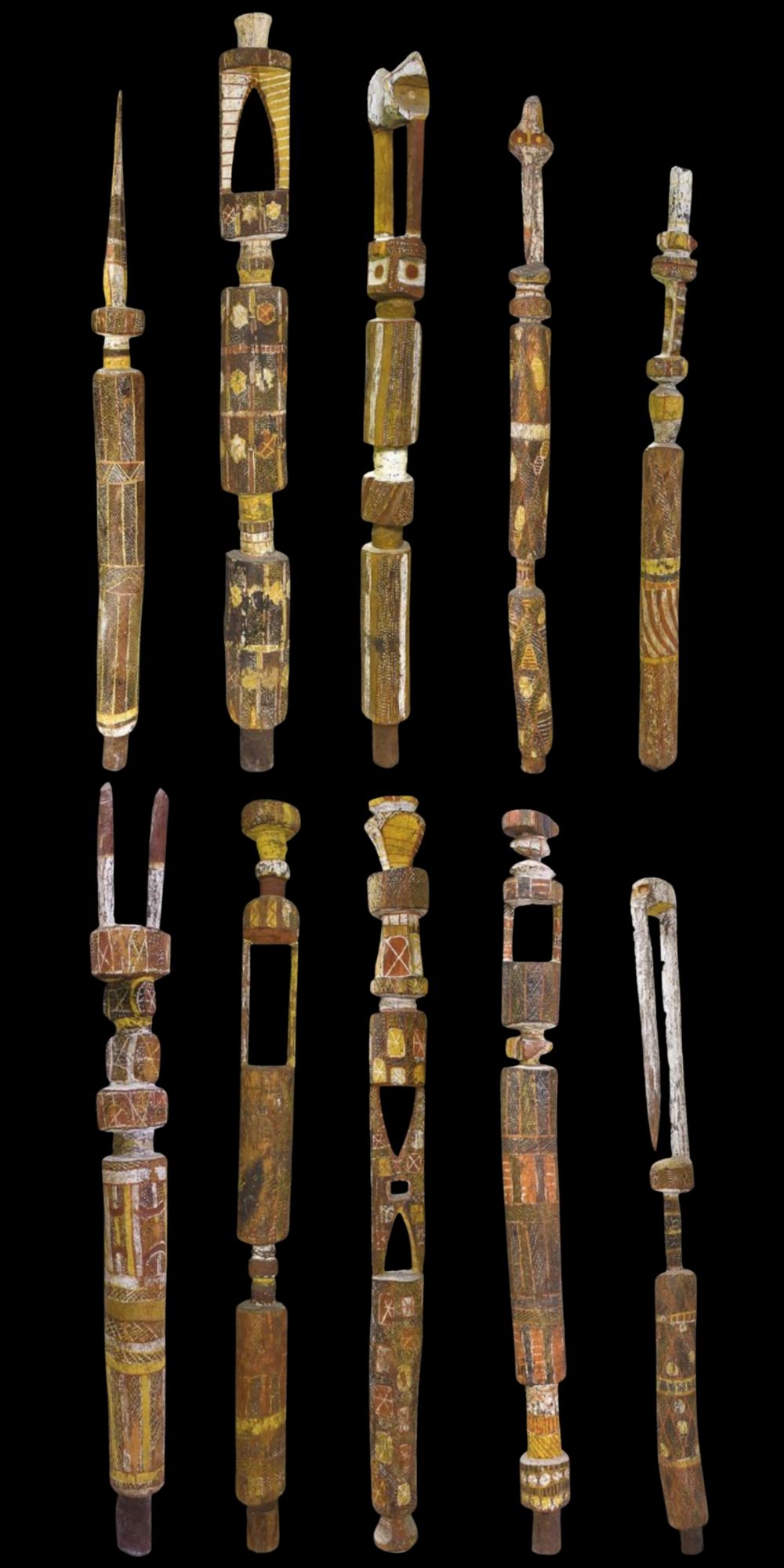
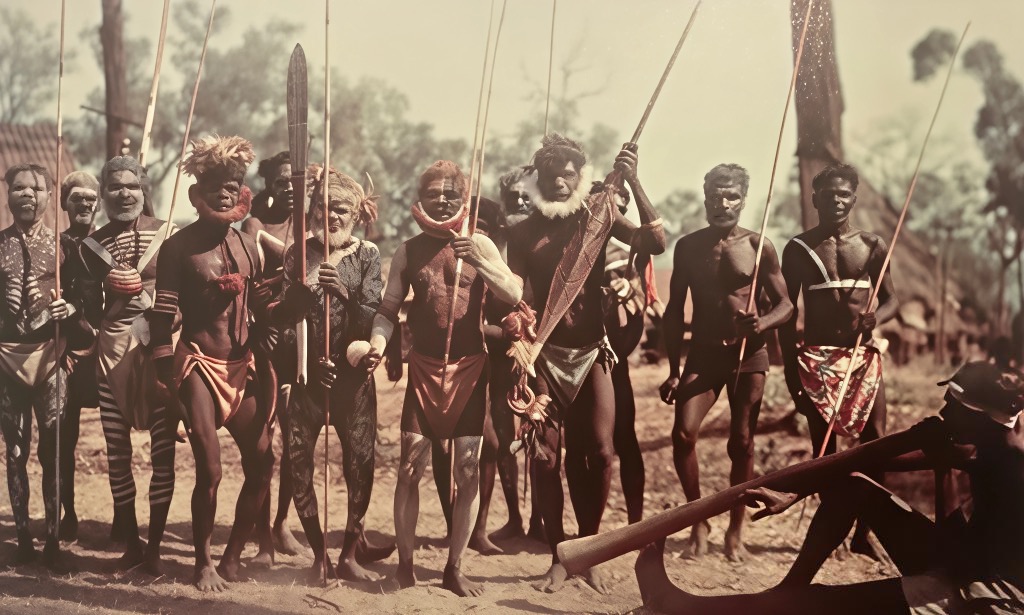
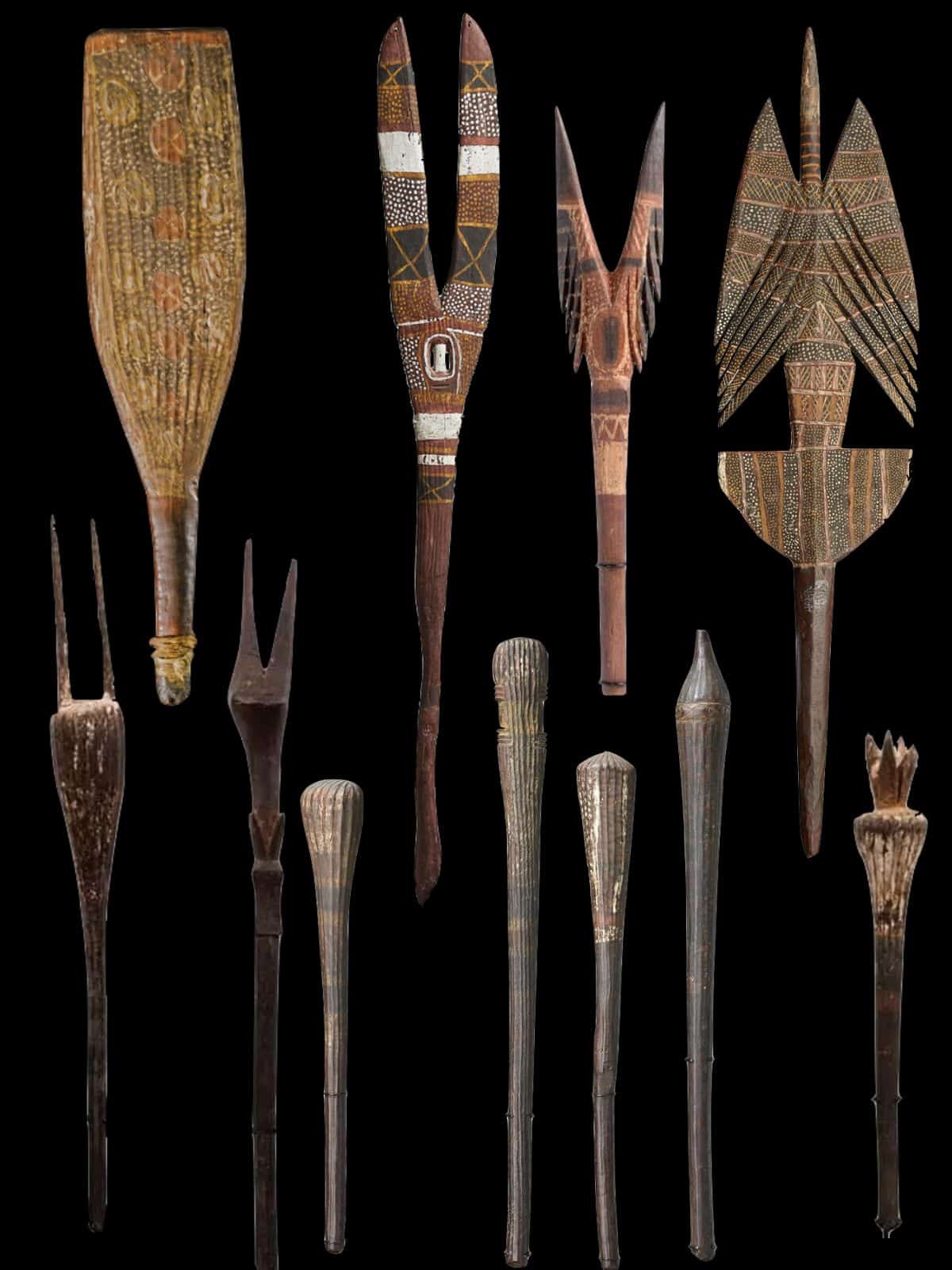
TIWI ART | SPEARS & CLUBS
Ceremonial Sculpture from the Tiwi Islands
The spears and clubs of the Tiwi people are among the most distinctive sculptural forms in Australian Indigenous art, embodying both practical function and ceremonial symbolism. Unlike mainland traditions, Tiwi culture developed without the use of spear throwers—an insight that led early anthropologist Herbert Basedow to recognise the Tiwi as a unique cultural group.
Tiwi spears range from simple hardwood hunting tools to highly ceremonial works, carved and painted with precision. Ceremonial spears, often towering in length, feature barbs numbering from ten to thirty, with shafts grooved, bound in human-hair string, and painted with natural ochres. Double-barbed spears (arawunikiri) are considered female; single-barbed (tunkaringa) are male—reinforcing Tiwi cosmology through design.
These spears are integral to Pukumani ceremonies, where they are held aloft, thrust into fire, or symbolically pointed toward graves to signify the finality of death. Once utilitarian weapons, they have evolved into sculptural masterpieces, maintaining ceremonial meaning while gaining recognition in fine art collections worldwide.
Tiwi clubs are equally diverse—from hand-thrown weapons to elaborately painted ceremonial forms with pointed, grooved, or spiked heads. Some clubs echo the legendary battle between Purukapali and Tapara—the mythological origin of death in Tiwi lore. Their forms, echoed in the forked tops of Pukumani poles, continue to carry ancestral weight.
The Tiwi were one of the few Aboriginal Cultures not to use Aboriginal Shields
TUNGAS – Iconic Bark Baskets of Tiwi Art
Timeless Vessels of Ceremony, Craft, and Culture
Tungas are large, folded bark baskets that stand as a powerful symbol of Tiwi art, tradition, and ceremonial life. Crafted from the bark of Eucalyptus tetrodonta, each tunga is expertly stripped, softened by fire, folded, and stitched using cane or vine bindings. Painted with natural ochres in bold, geometric designs, tungas are entirely unique in the context of Indigenous Australian art—immediately recognisable by their scale, form, and visual rhythm.
These remarkable objects are deeply embedded in Tiwi cosmology, appearing in the creation stories of Murtankala and Pwanga, the ancestral spider-woman and first maker of tungas. Spiders are still seen as spiritual guardians of these baskets, and tungas remain a key component of the Pukumani ceremony, the sacred mourning ritual that defines Tiwi death customs. During these ceremonies, tungas are used to carry ceremonial items and gifts for workers, and are often placed atop carved tutini (Pukumani poles) as a final act of spiritual closure.
First documented by European anthropologists in the early 1900s, tungas continue to be made today with minimal change in technique—highlighting the extraordinary continuity of Tiwi craftsmanship. Their painted surfaces range from fine stripes and dots to interlaced patterns, often differing on each side, with scratched-through ochre creating striking textural contrasts.
Old Tungas along with other forms of Aboriginal baskets are collectible works of contemporary Tiwi art, held in major institutions and sought after by private collectors worldwide.
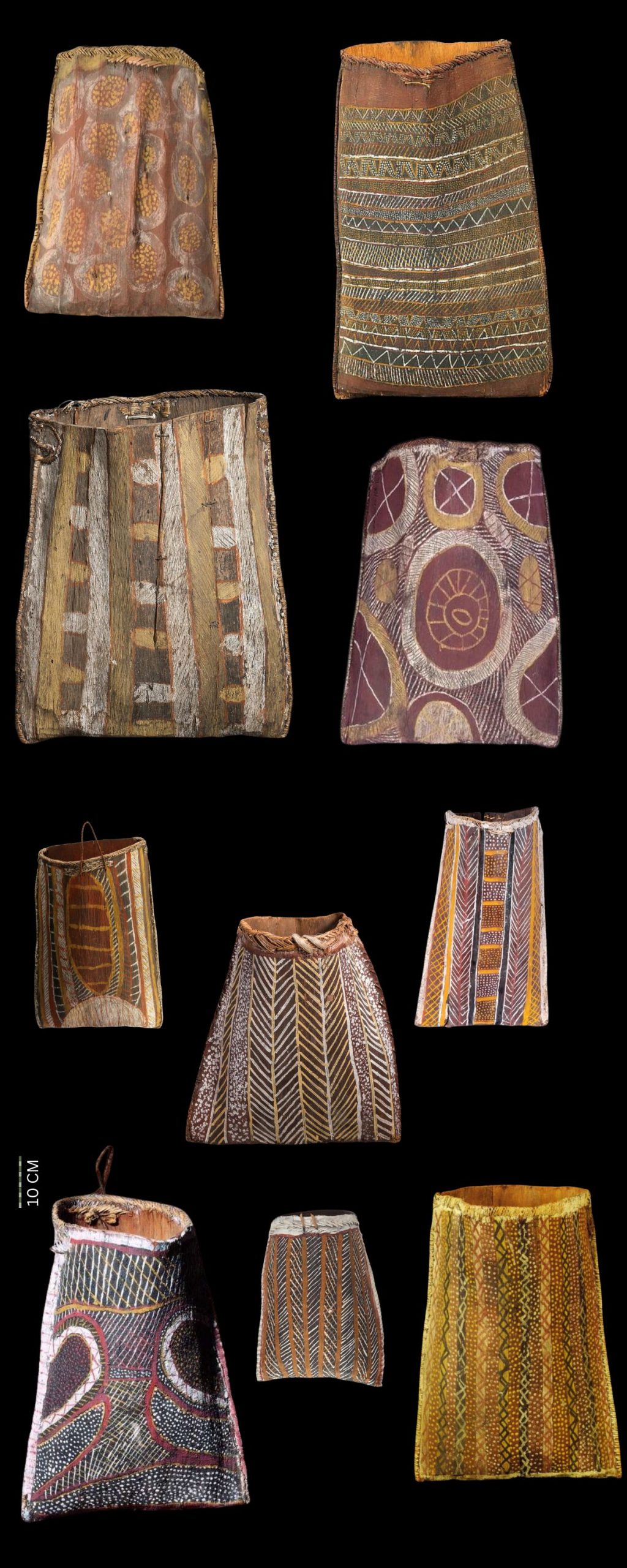
TIWI ART | FIGURATIVE SCULPTURE
Modern Expressions Rooted in Ancestral Knowledge
Figurative sculpture in Tiwi art emerged as a distinctive and dynamic form in the 1960s at Paru, a small village on Melville Island opposite the Bathurst Island Mission. Paru artists, particularly members of the Mandimbula family, became pioneers in this innovation. The first known figure, carved by Cardo Kerinauia, was sold to the mission—marking the beginning of a flourishing local art movement.
Though not strictly ceremonial, these early sculptures drew deeply on Tiwi visual language. They featured ochre-painted designs directly inspired by body painting and Pukumani symbolism—imbuing the works with spiritual resonance. As anthropologists and collectors arrived, the figurative works were embraced not only for their aesthetic value but also for their ethnographic significance.
The sculptures often depict ancestral figures, totems, or ceremonial beings, rendered in stylised form. Some speculate that small figures may once have been placed near graves to divert spirits—though this theory remains largely anecdotal.
Today, Tiwi figurative sculpture is celebrated internationally as a unique strand of contemporary Indigenous art. Whether carved from ironwood or painted with ochres, each figure remains a powerful extension of Tiwi identity, shaped by deep-rooted knowledge and evolving artistic vision.
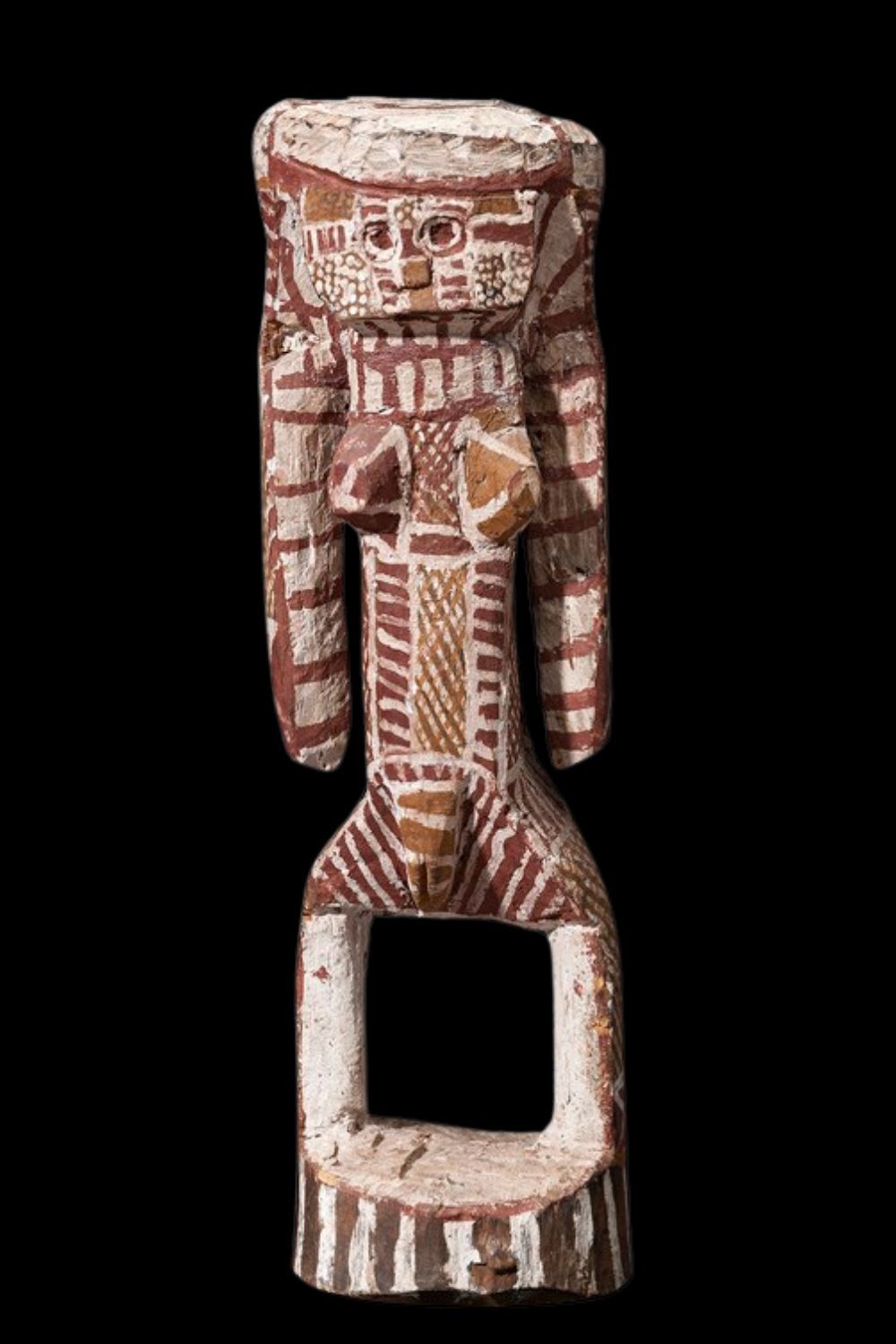
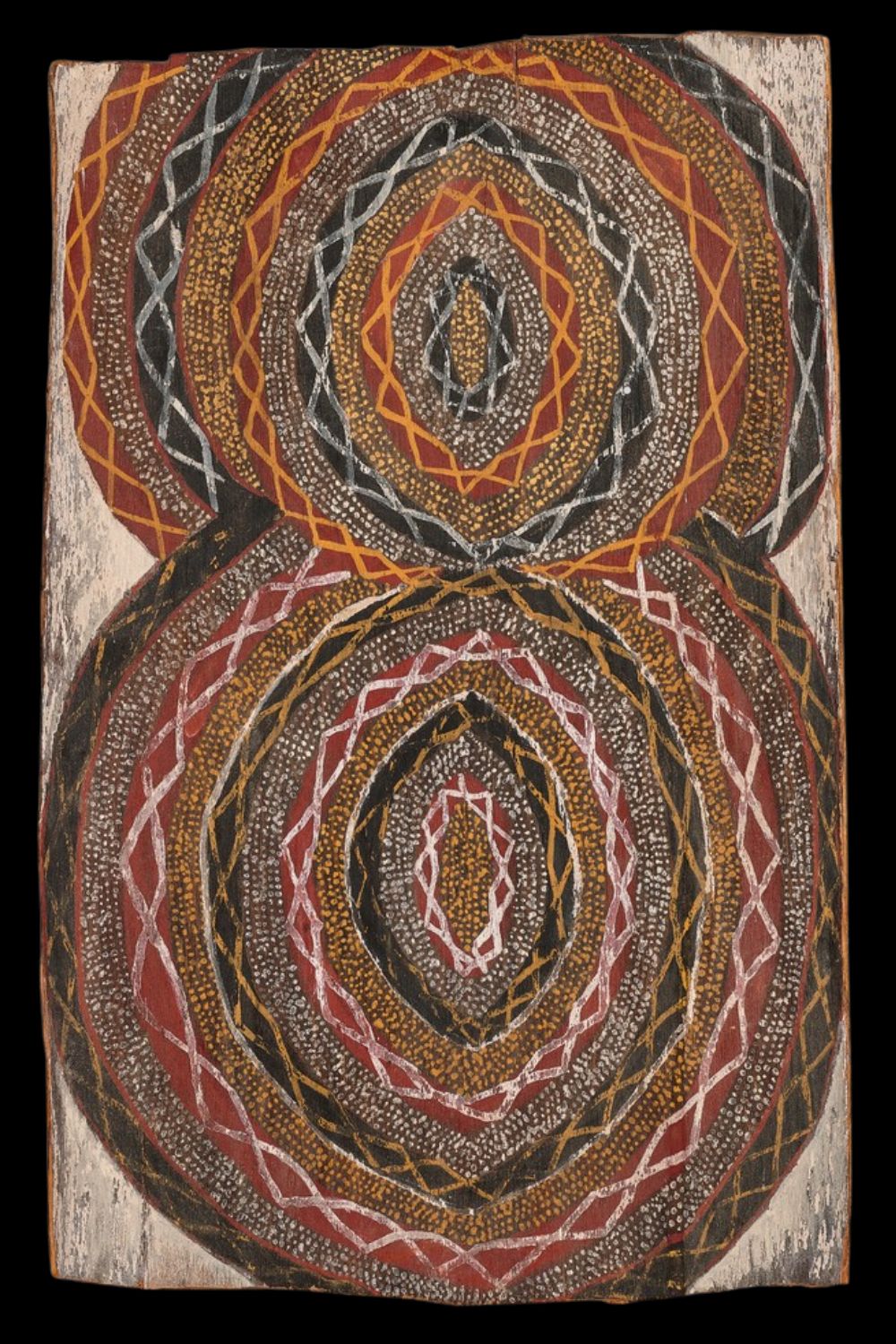
TIWI ART | BARK PAINTINGS
Rare Early Works & Sacred Skin Designs from the Tiwi Islands
Tiwi bark paintings, especially those created during the 1960s, represent a powerful and now rare expression of Pukumani ceremonial design. Painted primarily on stringybark without supporting frame sticks, these early works are deeply connected to ancestral law and are among the most sought-after in Australian Aboriginal art.
Two of the most significant early Tiwi bark painters were Ali Mungatopi and Deaf Tommy Mungatopi, artists known for their masterful command of Jilamara—a Tiwi term meaning “design,” “paint,” or “decoration.” While both artists also produced sculpture, their greatest legacy lies in their ochre-painted bark works, which remain prized by collectors and institutions.
Tiwi artists apply natural ochres in symbolic patterning:
-
Kurluwukari (circles)
-
Pwanga (dots)
-
Marlipinyini (lines)
These elements combine to form Jilamara, a visual language traditionally used for body painting and the decoration of Pukumani poles (Tutini)—markers of mourning and identity.
Bark paintings that depict sacred skin group designs are especially valued for their cultural and ceremonial significance. Works with early collection dates and strong provenance are extremely rare and highly collectible.
TIWI ART | SYMBOLS OF THE TIWI ISLANDS
Unique Visual Language from a Distinct Aboriginal Culture
The Tiwi Islands,are home to a culture distinct from mainland Aboriginal Australia. This cultural independence is reflected in the unique symbology used in Tiwi art, which bears no resemblance to the dot motifs or iconography found in Central Desert painting.
Instead, Tiwi symbols are deeply tied to ceremonial traditions—especially Pukumani (mourning) and Kulama (coming of age) rites. Artists employ a striking visual language.
These elements combine to form Jilamara, a term meaning “design” or “body paint.” Originally used in body paintingand tutini (funeral poles), these designs now appear in Tiwi paintings, Tiwi sculpture, and contemporary works.
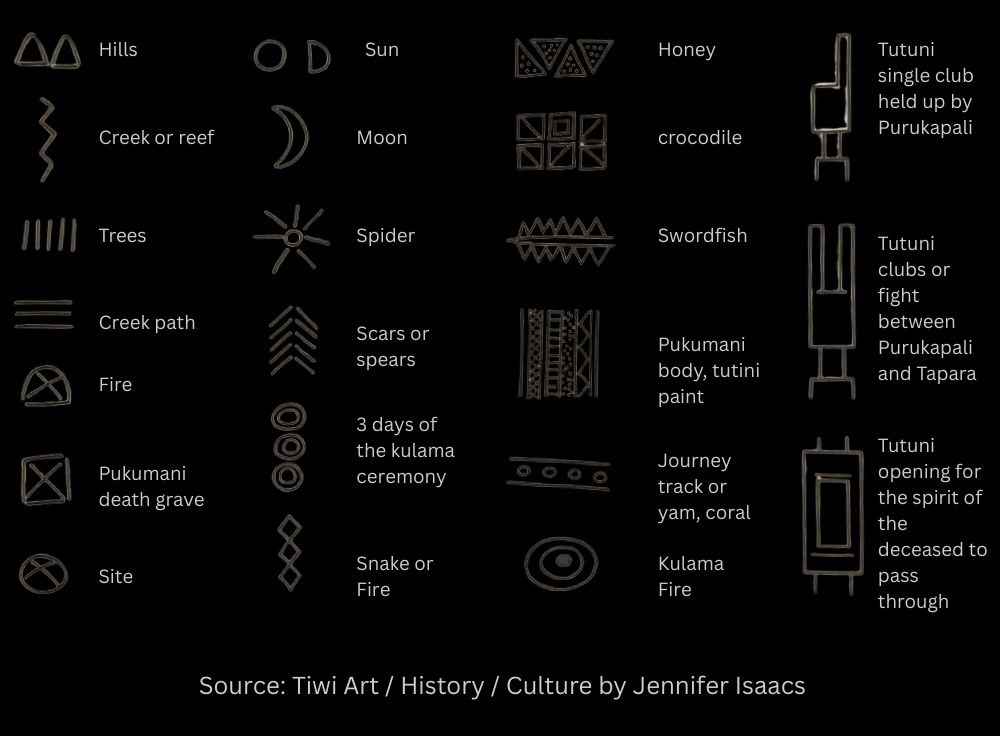
TIWI ART | EVOLUTION OF A LIVING TRADITION
From Ceremony to Contemporary Expression
Tiwi art continues to thrive as a vibrant and evolving cultural force. While deeply rooted in ceremonial traditions such as Pukumani and Kulama, Tiwi artists today work across a broad spectrum of media—adapting ancient forms into contemporary expression.
From the 1970s onwards, Tiwi communities embraced new materials and techniques. Artists began creating works on paper and canvas, exploring screen printing, ceramics, and textiles, often through collaborative art centres like Jilamara Arts, Tiwi Design, and Munupi Arts. These forms have found audiences worldwide, celebrated for their bold design, dynamic composition, and cultural integrity.
While these newer practices are rich and important, the focus of this article remains on the traditional roots of Tiwi art—particularly sculpture, bark painting, tutini (Pukumani poles), and ceremonial objects that have defined Tiwi aesthetics for generations.

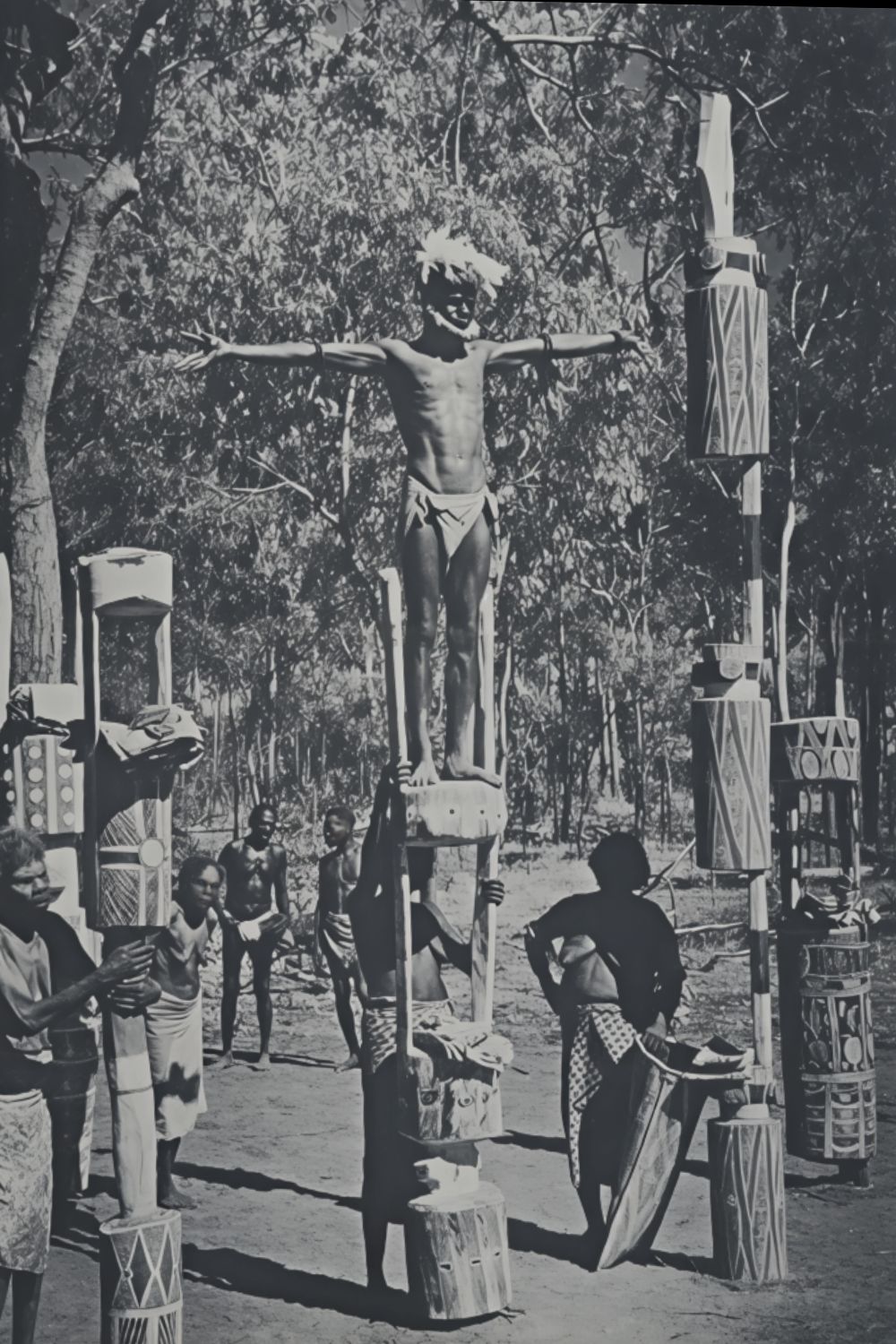
All images in this article are for educational purposes only.
This site may contain copyrighted material the use of which was not specified by the copyright owner.
References and further reading
Pioneer Tiwi Artists
I have individual artist profiles for many of these pioneering artists along with examples of their works. Just link through for more details of any artist of interest.
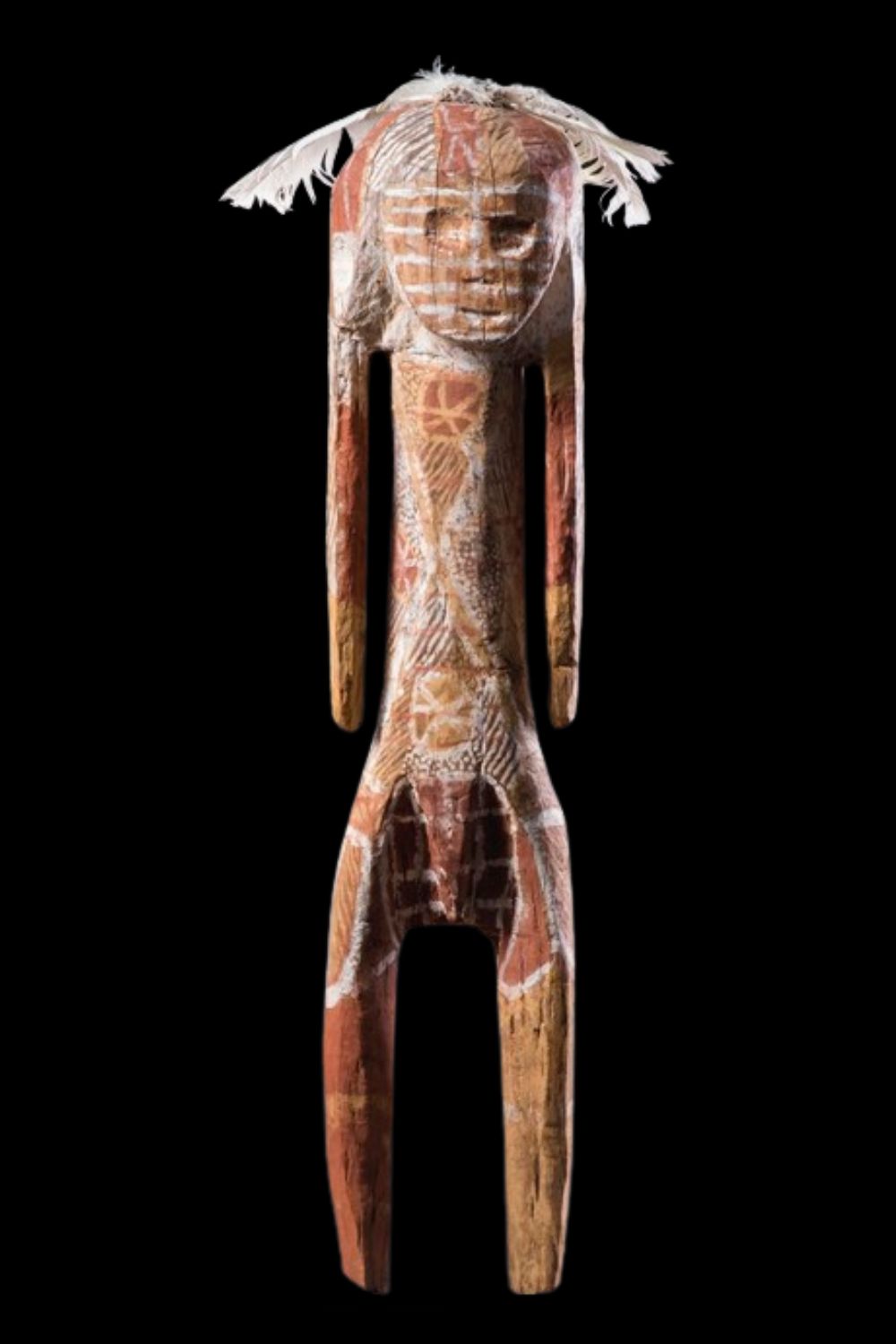
Enraeld Munkara Tipungaleralumi Djulabinyanna
Enraeld Munkara sculptures are distinctive. He carved sculptures with the arms extend directly from a bulbous head. The legs of his figures run straight down from flared hips. He often leaves a defined negative space between the legs which resembles Pukamani grave posts. His carvings have a raw unrefined power to them. He paints them with the same designs as used as skin designs during ceremony.

Paddy Henry Ripijingimpi
Ripijingimpi sculptures have a chunky and crude blocky appearance. The face has Incised eyes and mouth. His painting of the sculpture is often very fine. The sex on the figures is clearly shown. Paddy has also done several Pukumani posts. His carved and painted seabirds are very distinctive and although crudely carved are amongst the best-painted examples.
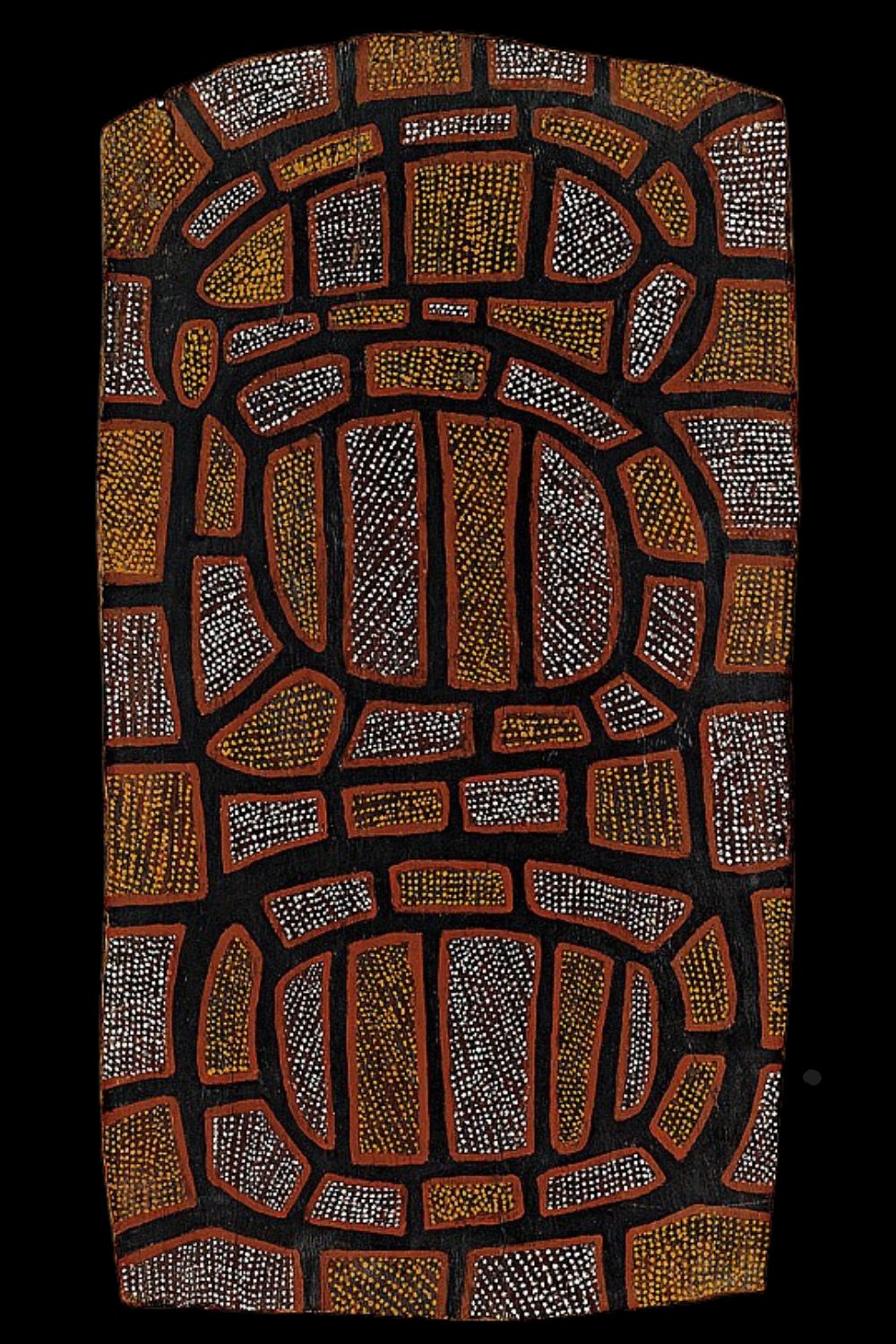
Alie Mungatopi
Unlike most Tiwi artists Alie Miller Mungatopi is better known for his bark paintings than his burial poles or figures. Many of his bark paintings traditional designs as those used on the skins of initiates. This makes his paintings very collectible.
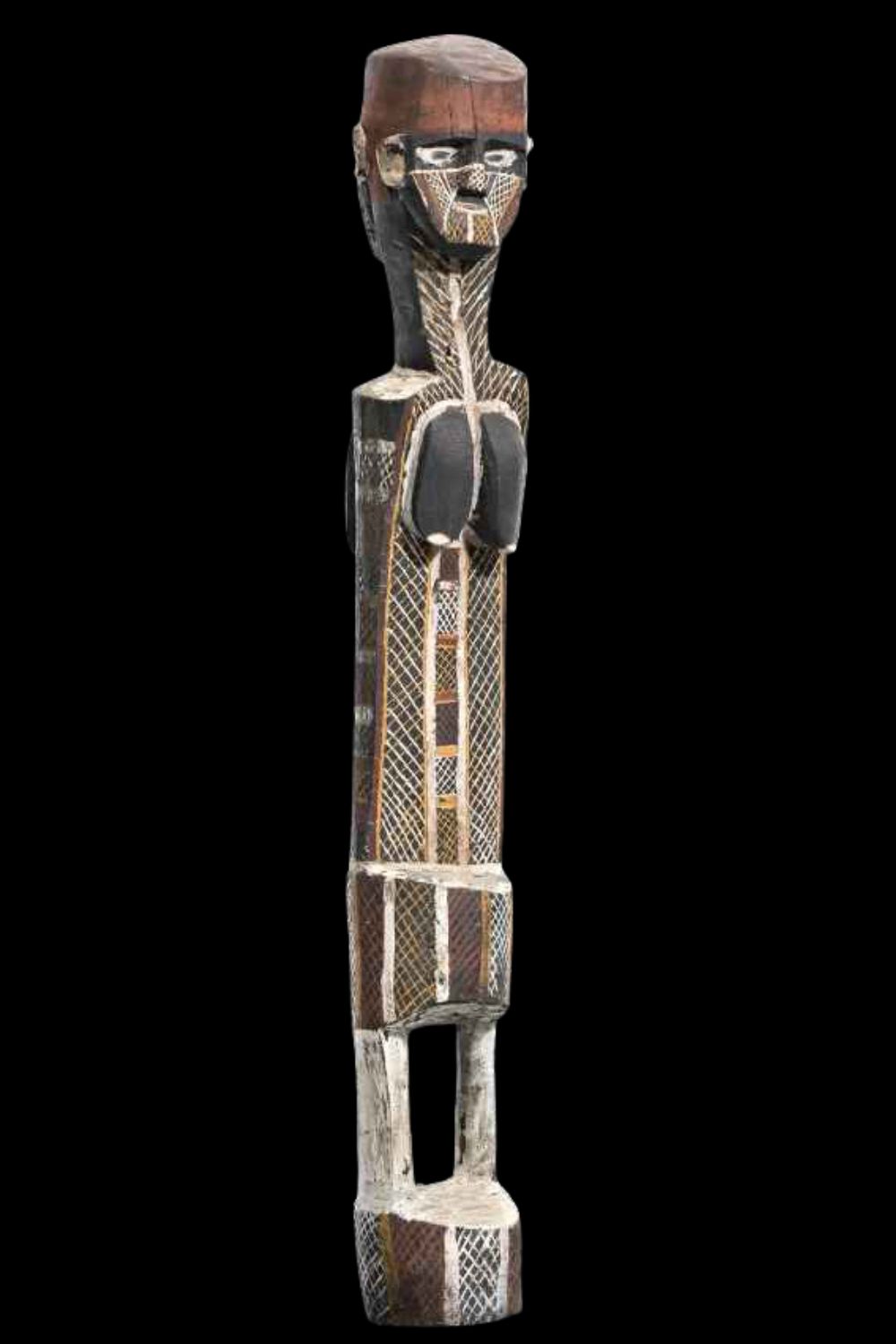
Mick Aruni
Mick Aruni carved and painted figures and painted at least one bark painting. His Early sculptures clearly indicate the sex of the figures. his later figures either through mission influence or buyer preference do not. His early figures had arms carved clear of the body and were very well painted. He is also known to have carved birds and sculptures with birds on the head.

Cardo Kerinauia
Cardo sculptures clearly show the sex of the figures. His figures have the arms carved clear of the body. On his completed sculptures he paints the entire carved figure with intense body paint designs. His figures have broad shoulders tapering to a narrow waist.
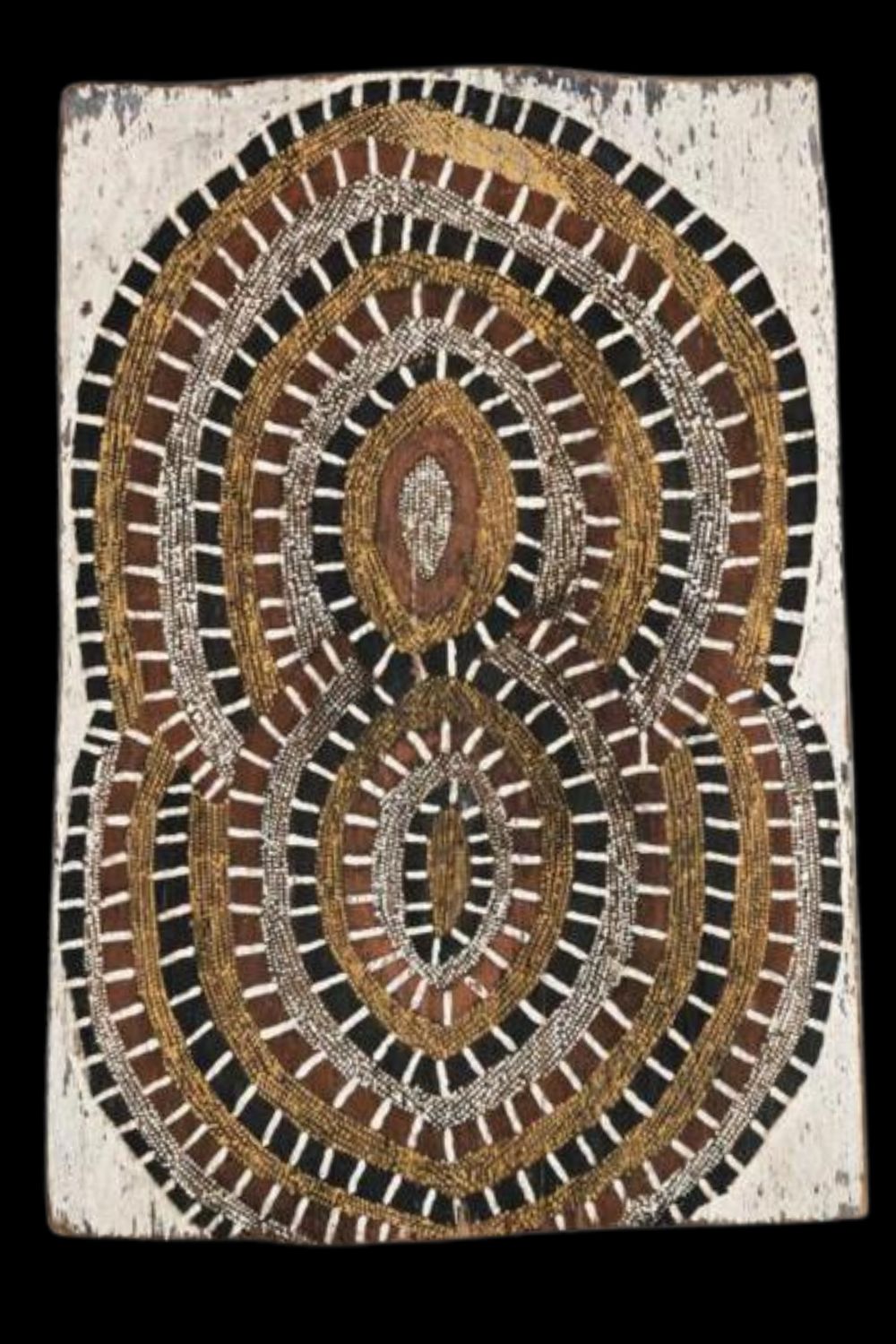
Deaf Tommy Mungatopi
You can tell Deaf Tommy Mungatopi work if you look carefully because he used a Pwoja comb to apply dots. This results in rows of around ten dots at a time to be perfectly aligned.
He often painted on a black or white background which results in a real pop of color.
His coral skin designs are masterpieces of Tiwi Art on bark
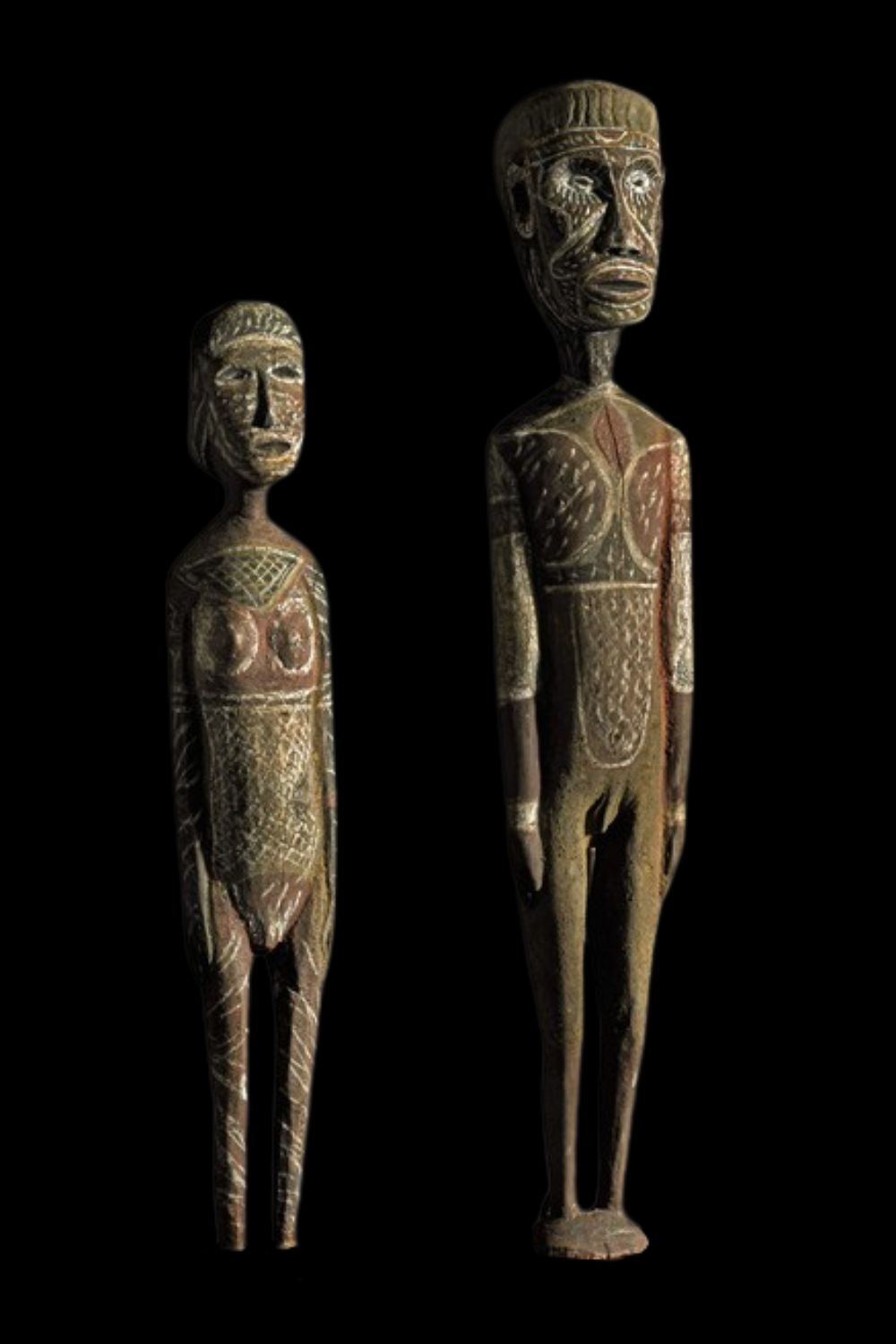
Benedict Munkara
Benedict Munkara sculptures have oversized heads of comparatively realistic Bodies. He did very few carvings but those that he did do are of great quality.
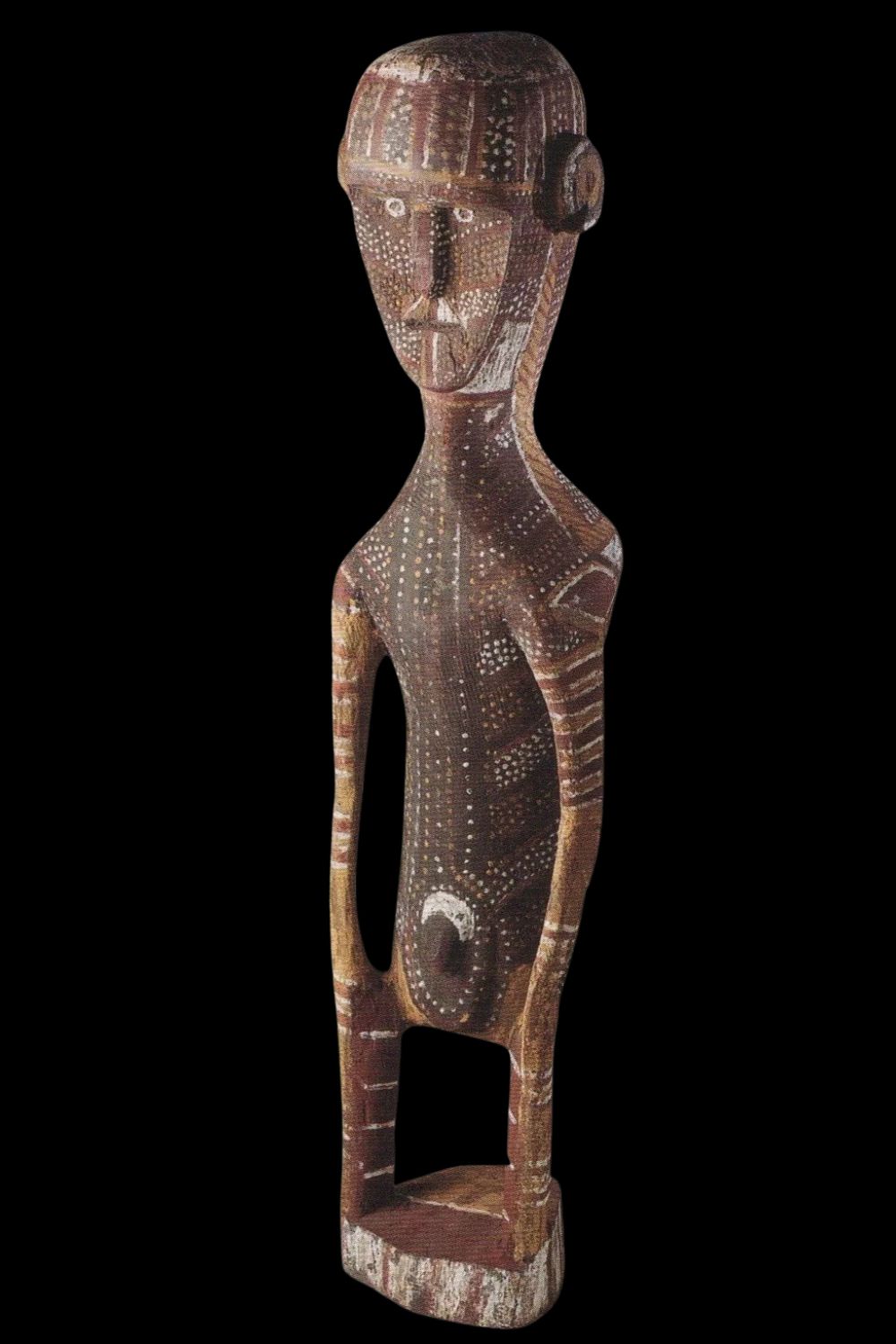
Jerry Kerinauia
Jerry Kerinauia Wainyingabunga was best known for his carvings of pelicans. He also made human figures and uniquely painted figurative bark paintings
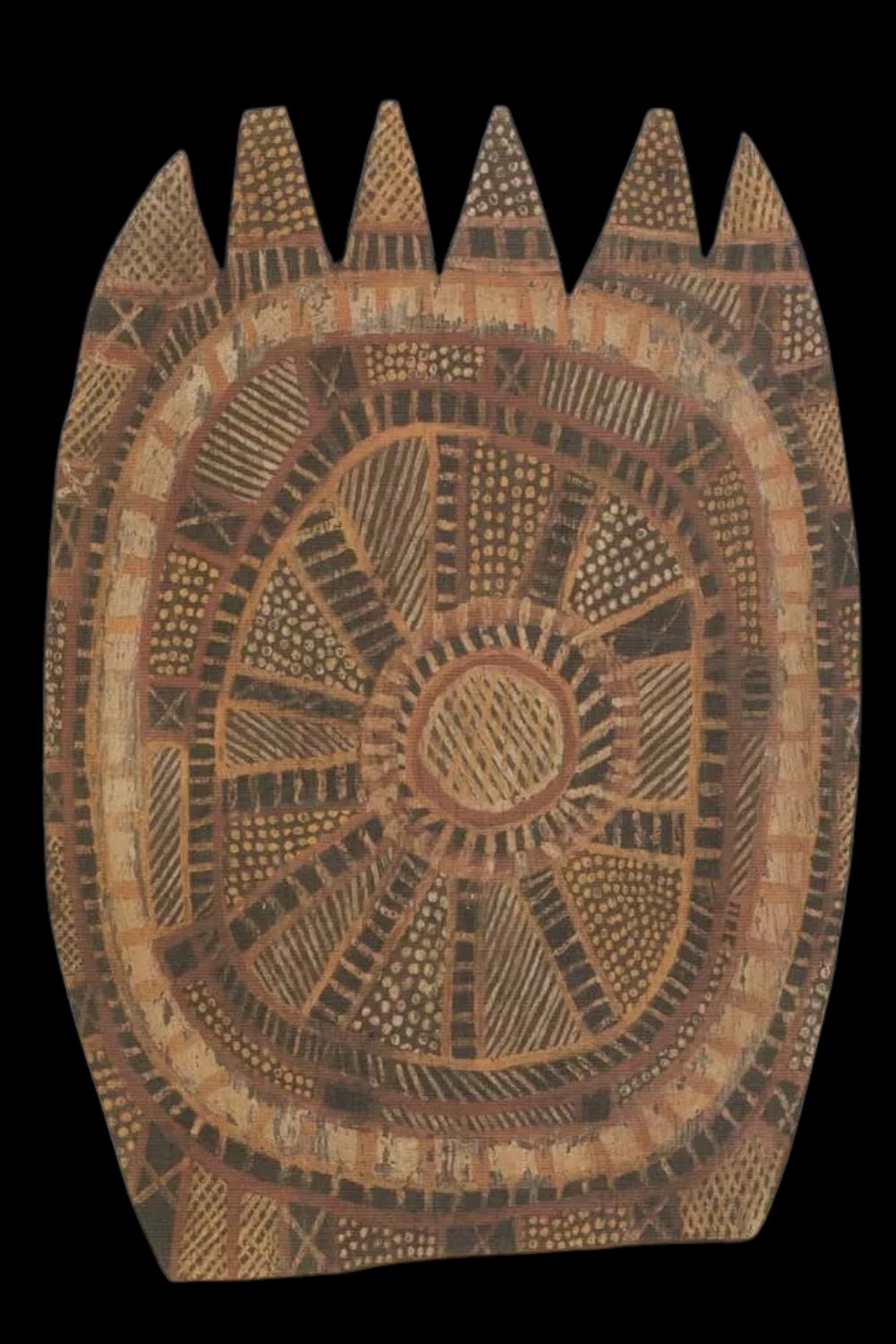
Black Joe Womadiemeri
Black Joe Womadiemeri was a master carver of Spears. He spoke excellent English and paints traditional designs on bark
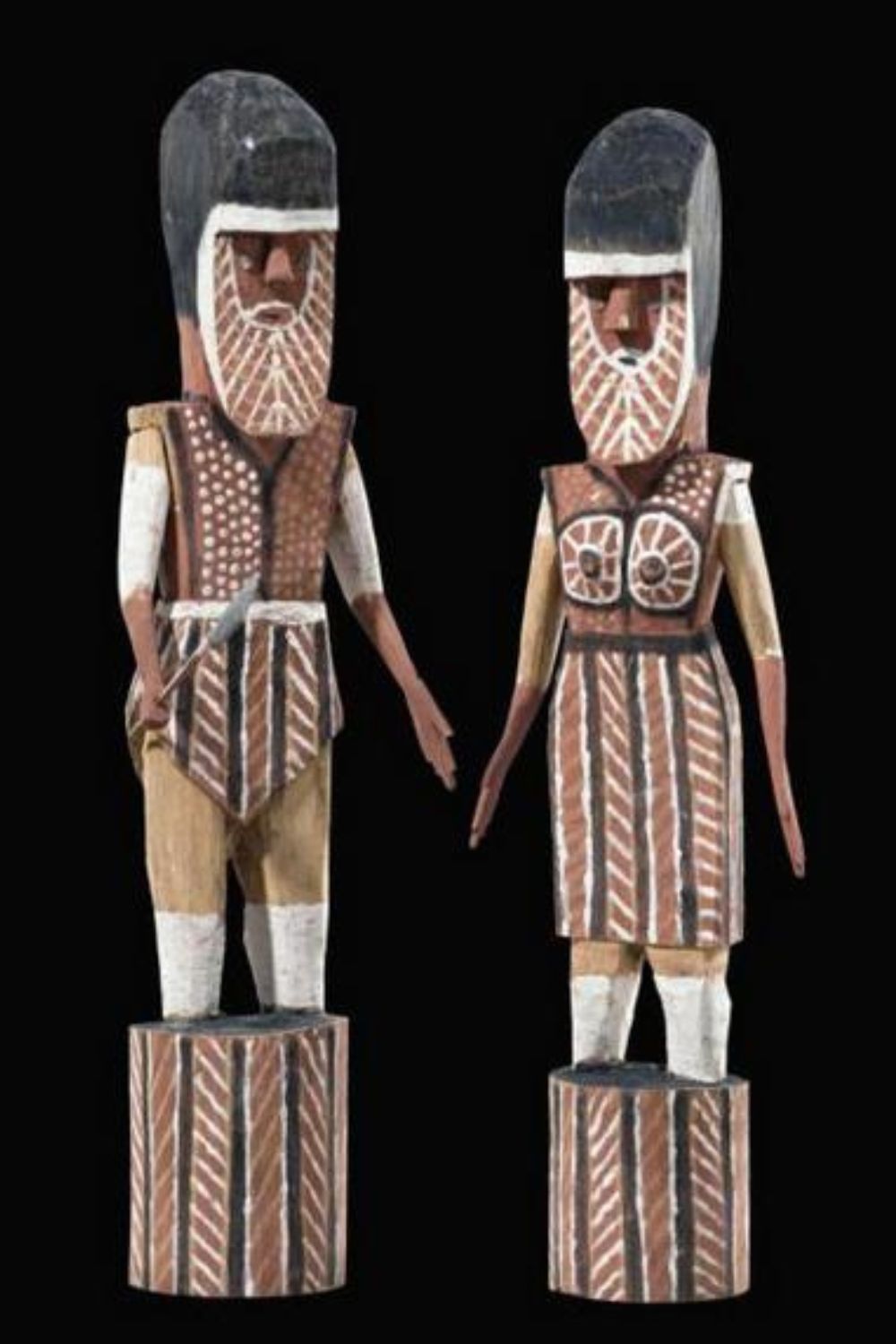
Mani Luki Wommatakimmi
Mani Luki was a prolific and highly skilled carver. He was nicknamed Harry Carpenter for his skills and has a very distinctive style.
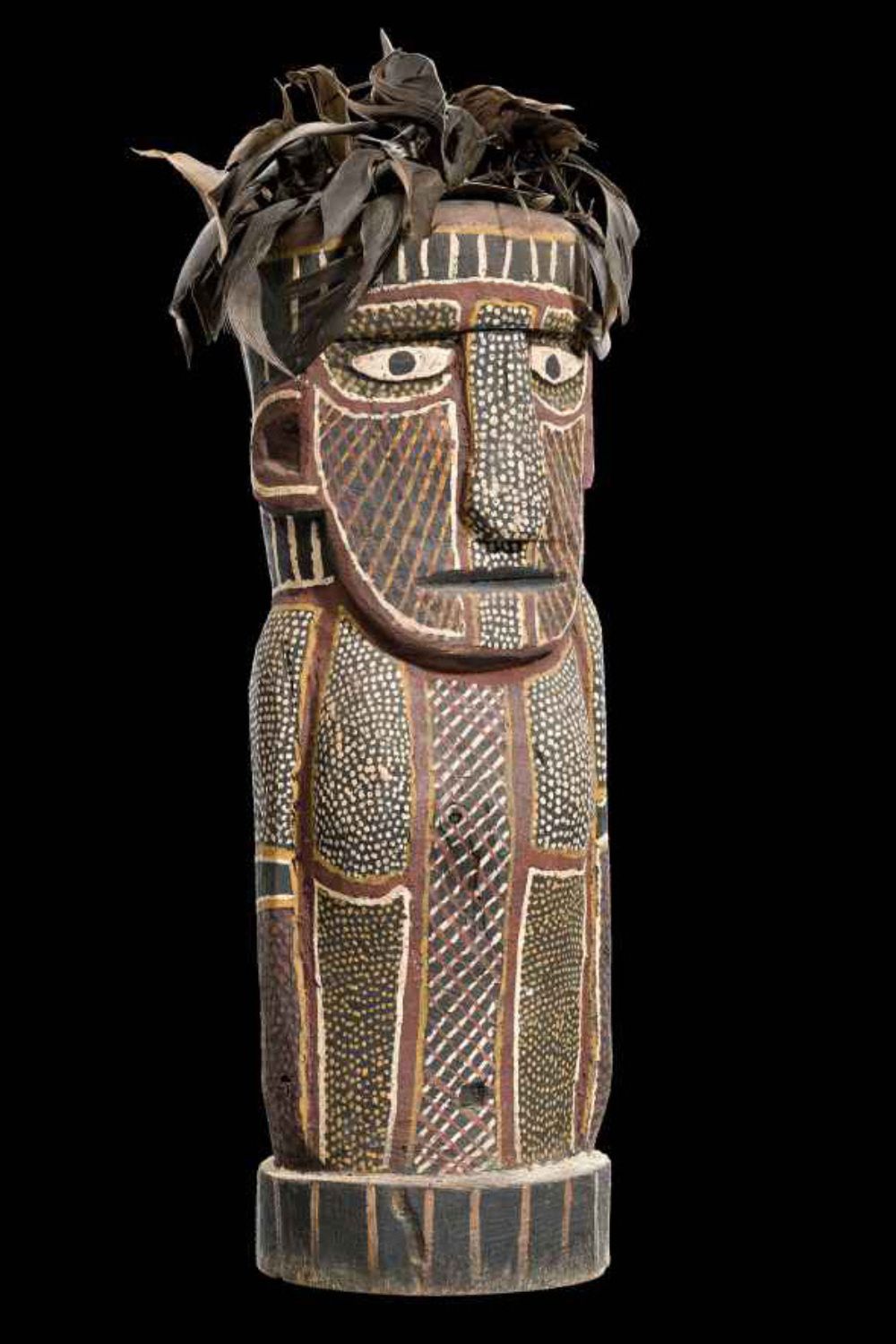
Declan Apuatimi
Declan Apuatimi sculptures are almost always in ironwood and often have heads the same size as the body. Sculptures are painted in designs associated with Pukumani ceremonies. They have distinctive almond-shaped eyes that are white, with black pupils. Declan also carved birds. They tend to have white bodies and are plainly decorated other than the wings. The wings are elaborately designed in motifs previously used for skin designs.
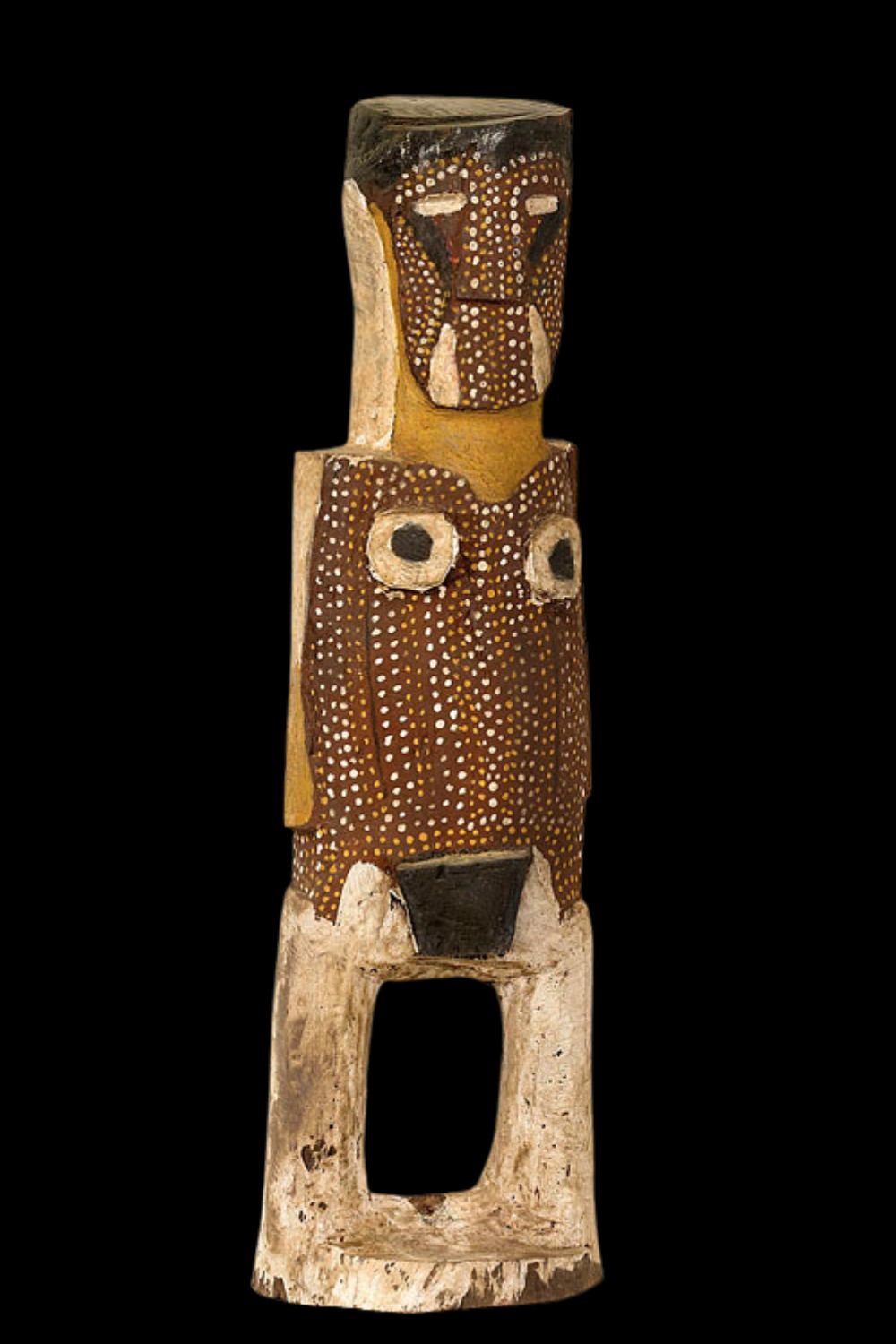
Kitty Kantila
Kitty Kantrilla sculptures have a chunky and crude blocky appearance. The face has a strong wide nose sometimes in a hexagonal shape. Her painting on the sculpture is often made up of lots of dots and blocks of solid color. All her earlier early indicate the sex of the figure. Kitty has also done several Pukumani posts and seabirds as well.
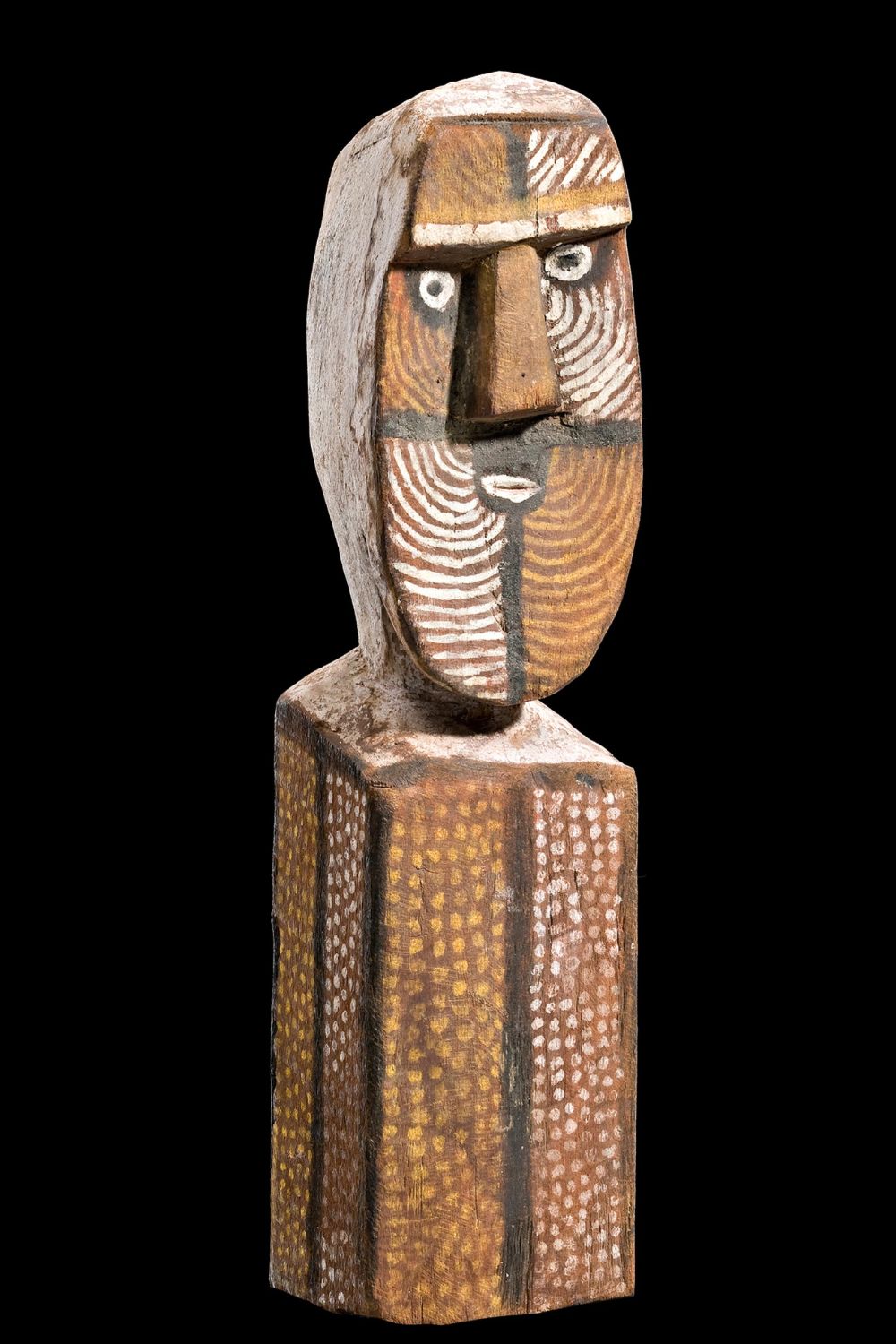
Mickey Geranium Warlapinni
Mickey Geranium was an early sculptor and bark painter. Very few examples of his work are known but they are valued due to their early collection dates
